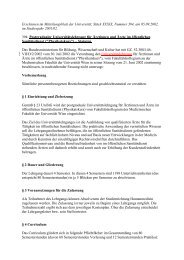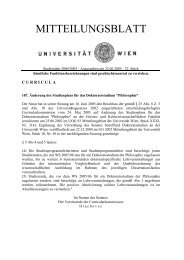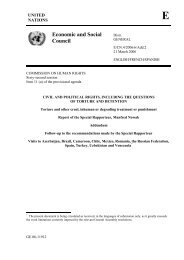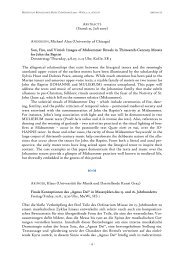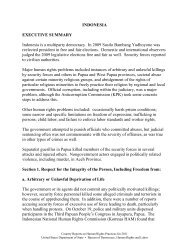Delivered Into Enemy Hands - Human Rights Watch
Delivered Into Enemy Hands - Human Rights Watch
Delivered Into Enemy Hands - Human Rights Watch
Create successful ePaper yourself
Turn your PDF publications into a flip-book with our unique Google optimized e-Paper software.
This prevented him from sleeping and occurred almost daily for the entire five years he was<br />
there.<br />
He said US guards beat him on several occasions, once fracturing his shoulder. Another<br />
time guards used “a hose, putting water on our faces, so you feel like drowning.” The<br />
International Committee of the Red Cross visited him on several occasions, and he heard<br />
from his family by letter for the first time three years into his detention. Safrani said that<br />
when the US personnel deemed him uncooperative, he was put in a room that was extremely<br />
cold. The air conditioning was turned on high and the Americans interrogated him<br />
the entire time. He was in the cell 20 to 30 times, and the longest time he spent in the<br />
room was 30 days. 365<br />
He said that over time, conditions improved. He was allowed to participate in sports about<br />
two to three times weekly in the beginning, and then eventually daily. The rule eventually<br />
became that detainees were to get up to 30 minutes of exercise per day, but often he was<br />
only allowed five minutes, which he said was a form of punishment.<br />
Transfer and Treatment in Libya<br />
When Safrani learned he was being returned to Libya, he asked his captors for asylum or<br />
resettlement in a third country. This request was denied, and on December 15, 2006, he<br />
was transferred to Libya. 366 He was initially held in Tajoura for six months, then moved to al<br />
Nasser bureau for approximately 45 days, and finally to Abu Salim prison until his release.<br />
He said he was physically abused while detained in Libya. He said the Libyan authorities<br />
used electrical shocks several times on his hands, legs, and sensitive areas of his body.<br />
He was whipped on his back, kicked, punched, and slapped. He suffered pain from a<br />
toothache and was denied pain relief for one year. After several years of detention, Safrani<br />
was charged with being a member of LIFG and al Qaeda. He was appointed a lawyer and<br />
was in court about three or four times. Ultimately he was convicted and sentenced to life in<br />
prison. He was released on August 24, 2011 after the fall of Gaddafi.<br />
365 The first time he was in the cell was for 5 days, then 10 days. The longest amount of time was 30 days.<br />
366 Safrani did not know his exact date of transfer, but Guantanamo records indicated it was on December 15, 2006. See<br />
“The Guantanamo Docket,” New York Times, http://projects.nytimes.com/guantanamo/country/libya (accessed May 27,<br />
2012).<br />
119 HUMAN RIGHTS WATCH | SEPTEMBER 2012




